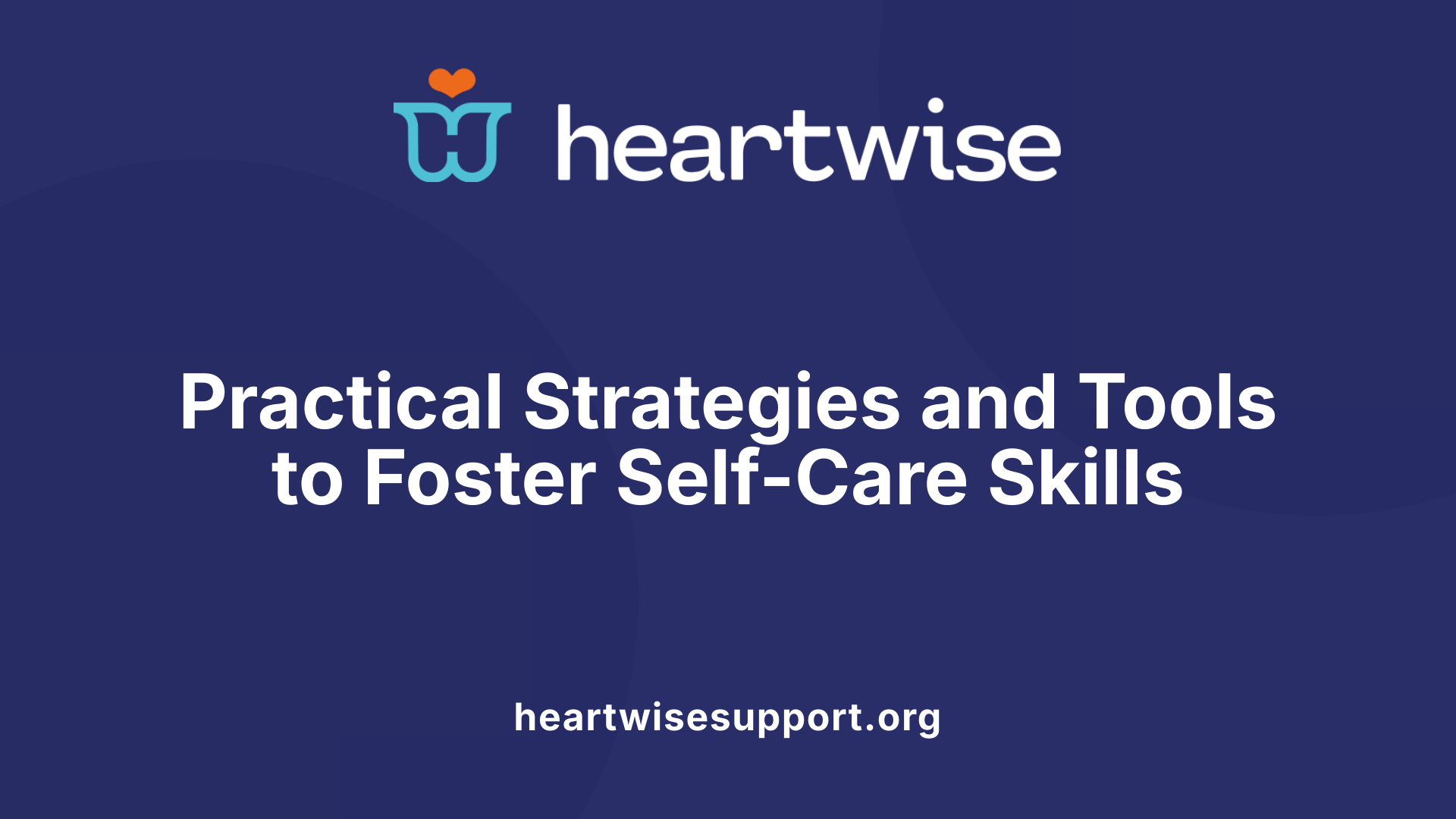Understanding Self-Care in Pediatric Occupational Therapy
Self-care is a fundamental component of childhood development and independence. In occupational therapy, it traditionally refers to activities of daily living (ADLs) such as feeding, dressing, grooming, bathing, and toileting. However, contemporary perspectives expand this concept to encompass physical, mental, and emotional health practices like rest, exercise, nutrition, social engagement, and stress management. The evolving understanding underscores its vital role not only in fostering independence but also in promoting overall well-being and resilience across populations. This article explores how occupational therapy enhances self-care skills in children, the strategies involved, and the profound outcomes achieved in promoting developmental milestones and lifelong health.
The Therapeutic Approach and The Role of Self in Occupational Therapy

What is the therapeutic use of self in occupational therapy?
The therapeutic use of self in occupational therapy is about intentionally applying your personality, insights, and communication skills to foster trust and a strong relationship with clients. It involves being genuine, empathetic, and attentive to the client's routines, interests, and communication style.
Therapists carefully manage their own emotions and responses to create a collaborative environment. Techniques like attunement—being present and responsive—and offering unconditional positive regard help build rapport. Sometimes, appropriate self-disclosure or sharing personal stories can encourage openness.
Moreover, therapists balance power dynamics by empowering clients to participate actively in their care. Self-awareness and self-care are also vital for therapists to stay effective, especially in challenging settings or when providing telehealth services.
The primary goal of the therapeutic use of self is to motivate client participation, support progress towards meaningful goals, and foster a sense of hope and engagement—all through genuine, relational practices.
What is the concept of self-care in occupational therapy?
Within occupational therapy, self-care historically meant activities of daily living (ADL), like eating, grooming, bathing, and dressing, which promote independence and confidence. These foundational tasks enable individuals to care for themselves physically and emotionally.
Recently, the understanding of self-care has expanded beyond ADLs to include broader health and wellness practices. It now encompasses physical activities such as exercise, mental health strategies like stress management, emotional regulation, nutrition, social connections, and mindfulness.
Despite its broader scope, the term is often used ambiguously across different contexts. Recognizing this, occupational therapists aim to integrate self-care into overall well-being, emphasizing prevention, health promotion, and resilience.
Therapists implement interventions that enhance fundamental skills like fine motor coordination for dressing or using utensils, as well as cognitive skills such as problem-solving and sequencing routines. They also address sensory processing issues that can interfere with self-care activities.
Supporting self-care involves helping individuals develop routines, using visual schedules, and providing adaptive tools—like button hooks or Velcro shoes—to foster independence.
By redefining self-care within their practice, occupational therapists can more effectively promote individual health, resilience, and participation in daily life, benefiting overall quality of life.
Effects, Benefits, and Outcomes of OT on Self-Care Development

What are the benefits and outcomes of occupational therapy in developing self-care skills?
Occupational therapy plays a vital role in helping children develop essential self-care abilities such as dressing, grooming, feeding, and toileting. Personalized, goal-oriented approaches allow children to gain independence and confidence in their daily routines. Through techniques like task training, sensory integration, and the use of adaptive tools, therapists target improvements in motor skills, cognitive sequencing, and executive functioning.
These interventions are often combined with routines and visual schedules, which help children remember and sequence steps in activities like brushing teeth or buttoning a shirt. Family involvement is emphasized, with therapists providing strategies for home practice to support skill generalization and maintenance.
Using adaptive equipment—such as child-friendly utensils, long-handled brushes, or sock aids—therapists can modify tasks to suit individual needs. Additionally, addressing sensory processing issues with tools like weighted blankets or sensory diets makes self-care activities more tolerable and engaging for sensory-sensitive children.
The effects extend beyond physical skills; they foster emotional resilience, motivation, and safety. As children become more capable, their self-esteem improves, allowing them to participate more fully in social and community contexts. Overall, occupational therapy outcomes include increased independence, better quality of life, and enhanced social participation.
How does OT contribute to improved independence and well-being?
Occupational therapy enhances overall independence by strengthening core skills that enable children to perform daily activities safely and efficiently. Beyond motor ability, OT focuses on cultivating attention, problem-solving, and emotional regulation, which are critical for executing self-care routines.
Creating structured routines, visual schedules, and providing adaptive tools help children manage tasks with confidence. For example, using picture-based prompts can streamline complex sequences, reducing frustration and anxiety.
Caregiver education and environmental modifications are integral components of therapy. When families learn effective strategies and environments are adjusted to minimize barriers—such as installing grab bars or using sensory-friendly materials—children demonstrate increased safety and autonomy.
These efforts lead to improvements in self-esteem, motivation, and resilience. Children feel more competent, which encourages ongoing participation in daily routines and social interactions. Ultimately, occupational therapy supports a holistic enhancement of well-being, enabling children to lead more active, confident, and socially engaged lives.
| Benefits of OT in Self-Care Development | Specific Strategies | Expected Outcomes |
|---|---|---|
| Development of motor Skills | Adaptive equipment, sensory integration, play-based activities | Improved physical dexterity, coordination |
| Cognitive and Executive Skills | Visual schedules, routines, task sequencing | Better planning, problem-solving |
| Emotional and Behavioral Support | Motivation techniques, caregiver coaching | Increased confidence, resilience |
| Safety and Independence | Environmental modifications, adaptive tools | Greater autonomy, safer self-care |
| Overall Well-Being | Holistic, personalized interventions | Enhanced quality of life, social participation |
Identifying When Occupational Therapy Is Needed for Self-Care Support

What signs indicate the need for occupational therapy to support self-care development in children?
Signs that a child might benefit from occupational therapy include persistent struggles with basic activities such as dressing, grooming, feeding, and toileting, especially when these issues prevent the child from being independent. Children showing sensory processing issues—like over-responsiveness or under-responsiveness to tactile stimuli—may avoid certain textures or reactions, making self-care tasks difficult.
Motor skill delays are also common indicators. These include poor coordination, difficulty manipulating fasteners like zippers and buttons, or problems with fine motor control for tasks such as using utensils or brushing teeth. Behavioral signs, such as frequent emotional outbursts or difficulty following routines, can signal underlying sensory or motor issues that OT can address.
Physical signs like poor posture or struggles with specific self-care routines further reinforce the need for intervention. Recognizing these indicators early allows for timely support that can improve independence and confidence in self-care tasks.
What developmental milestones support self-care independence, and how can OT assist?
Developmentally, children typically acquire self-care skills gradually. Milestones include holding and drinking from a cup around 18-24 months, unzipping zippers and unbuttoning large buttons by ages 2-3, and being fully independent with dressing—including shoe tying—by ages 7-9.
When children lag behind these milestones, occupational therapy offers targeted strategies. OTs use play-based activities, visual schedules, and adaptive tools to enhance motor skills, sensory integration, and cognitive sequencing. Facilitating these skills early in life is crucial because young brains are most adaptable.
Through early intervention, therapists help children develop confidence and independence in self-care routines, reducing frustration and encouraging lifelong skills.
What are common signs that a child may benefit from OT?
Children who face challenges with dressing, grooming, toileting, or feeding may need OT support. Signs include sensory sensitivities—such as aversion to certain textures or smells—and poor coordination or fine motor difficulties.
Behavioral cues like avoidance of self-care tasks, meltdowns during routines, or messy outcomes also suggest the need for intervention. Emotional regulation issues, including frequent tantrums or refusal behaviors during self-care, can indicate underlying sensory or motor problems.
Early recognition of these signs enables prompt assessment and intervention, which can significantly improve a child's ability to perform daily activities independently and with confidence.
Strategies and Practical Techniques to Develop Self-Care Skills

What strategies used in occupational therapy to develop self-care abilities in children?
Occupational therapists employ a diverse toolkit of strategies to help children build self-care skills. One fundamental approach involves task analysis, where activities like dressing or grooming are broken down into smaller, manageable steps. This helps children learn each component separately, reducing frustration and increasing confidence.
Therapists also use modifications and assistive devices to facilitate independence. For example, button hooks and zipper pulls help children with fine motor difficulties manage clothing fasteners. Weighted utensils and sensory-friendly tools support sensory processing and facilitate participation during meals.
Creating structured routines and visual schedules is another core strategy. These visual aids depict the sequence of tasks—such as brushing teeth or washing hands—making routines predictable and easier to follow. Visual cues can reduce anxiety and support memory, enabling children to become more independent in daily self-care.
Addressing sensory processing challenges through techniques like sensory integration therapy helps children tolerate grooming and dressing tasks better. Enhancing motor coordination, stability, and executive functioning—like problem-solving and sequencing—further supports the child's ability to perform activities such as toileting and personal hygiene.
Sessions are often conducted in the child's natural environment, such as home or school, to promote real-world application. Educating parents and caregivers on these strategies ensures consistent practice outside therapy sessions, fostering lasting skill development and independence.
How do environmental adaptations and visual aids support self-care development?
Environmental modifications and visual supports significantly influence self-care skill acquisition. Visual schedules and task charts provide clear, visual representations of routines, helping children understand what to do and when. This reduces uncertainty and anxiety, especially for children with sensory sensitivities or cognitive impairments.
Physical adaptations like accessible bathroom fixtures, grab bars, and specialized utensils make tasks physically safer and easier for children with motor challenges. Adaptive equipment, such as long-handled brushes or sock aids, enables children to perform tasks independently, streamlining routines.
These environmental supports promote consistency and encourage repeated practice, which are vital for skill mastery. They also foster confidence by making activities less daunting, leading to higher participation levels.
What role does caregiver involvement play in developing self-care skills?
Caregivers are vital partners in developing self-care abilities. Educating parents and guardians about strategies, adaptive tools, and routines ensures that children receive consistent support across settings. Caregivers who actively engage in guided practice and positive reinforcement help reinforce skills learned during therapy.
By involving caregivers in routine practice, children gain confidence and motivation to perform activities independently. Caregivers also monitor progress, provide feedback, and make necessary adaptations as the child grows, which sustains ongoing development.
In essence, caregiver involvement extends therapeutic gains into everyday life, making skill development a continuous, supportive process. This teamwork approach is crucial for fostering long-term independence and self-efficacy in children.
Implementing Intervention Strategies and Supporting Developmental Milestones

How can occupational therapy improve self-care skills in children?
Occupational therapy (OT) can play a crucial role in enhancing self-care skills among children by tailoring interventions to each child's unique needs. Therapists begin with detailed assessments to identify specific challenges, whether they stem from sensory processing difficulties, motor skill delays, or environmental barriers. Once evaluated, therapists develop personalized plans that may include teaching children new, safe ways to perform everyday activities like dressing, grooming, and feeding.
A common approach involves using visual schedules and structured routines to help children remember and sequence tasks. Adaptive equipment such as child-friendly utensils, button hooks, or long-handled brushes is often recommended to facilitate independence. Therapists also work on improving underlying skills like fine motor coordination, strength, stability, and executive functioning. Addressing sensory sensitivities with techniques like sensory integration therapy enables children to tolerate grooming and dressing tasks better.
Caregiver education is vital; therapists coach parents and family members on strategies to support consistent practice at home. Through these combined efforts, children develop confidence and independence, allowing them to participate more fully in daily routines safely and comfortably.
What are best practices in delivering effective OT interventions for self-care?
Effective OT interventions hinge on thorough assessment, goal setting, and the implementation of developmentally appropriate, engaging activities. Best practices include:
- Using play-based and naturalistic activities that mirror daily routines.
- Incorporating visual supports and task sequencing tools.
- Collaborating closely with families, teachers, and interdisciplinary teams to ensure consistency across environments.
- Regularly monitoring progress and adjusting strategies as needed.
- Using environmental modifications and adaptive tools to overcome physical or sensory barriers.
Scheduling sessions typically lasts around 30 minutes and occurs once or twice weekly, though variations are tailored to each child's needs. Emphasizing caregiver involvement helps reinforce skills outside therapy sessions, creating a supportive network that promotes ongoing development.
How do natural settings and caregiver involvement influence therapy success?
Implementing OT interventions within the child's natural environments—such as homes, schools, or community spaces—greatly enhances the relevance and generalization of learned skills. When therapists conduct sessions in familiar settings, children practice self-care in real-life contexts, which makes the skills more meaningful and easily transferable.
Caregivers play a pivotal role in this process. By actively participating through coaching and guided practice, they reinforce strategies, sustain motivation, and ensure consistent routines. Educating families about environmental adaptations, providing practical tools, and encouraging routine incorporation help embed skills into daily life.
This collaborative approach leads to more sustainable improvements, increased independence, and greater confidence for children as they master essential self-care tasks.
Fostering Independence and Well-Being Through Occupational Therapy
Occupational therapy plays a pivotal role in developing and enhancing self-care skills in children, laying the foundation for independence, confidence, and improved quality of life. Through individualized assessment, targeted interventions, use of adaptive tools, and family involvement, therapists support children in overcoming sensory, motor, and cognitive challenges that hinder daily routines. Establishing routines, visual supports, and environmental modifications further reinforce skill acquisition and promote consistency across settings. Early intervention remains crucial, as young children’s brains are highly adaptable, providing opportunities to address delays before they become ingrained habits. As occupational therapy continues to evolve, its focus on holistic, child-centered practices ensures that children not only meet developmental milestones but also thrive in their daily lives. Supporting children’s autonomy in self-care empowers them to participate fully in social, educational, and community activities, fostering a healthier, more confident, and resilient future.
References
- How Can Occupational Therapy Help Your Child Develop Self Care ...
- Top 10 Ways Occupational Therapy Can Help Children with Self-Care
- Self-Care Skills for Children - Together by St. Jude™
- A Scoping Review of Intervention Implementation for Self-Care Skills ...
- Self-Care: An Occupational Therapy Student Perspective - Encompass
- The Power of Self-Care: An Occupational Therapy Perspective
- Self Care Strategies for Therapy Providers - The OT Toolbox
- Occupational therapy and self-care - Youth Living Skills











